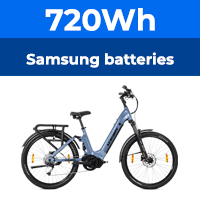Hi all
I have inherited a 40w Maplin solar panel. I am also moving house in two weeks and the new place has large shed with sunk bike hoops in it.
Perfect for an entirely off grid charging I thought. Stick panel on roof, connect to 12v 80ah leisure SLA leisure battery. Just need to buy an invertor 12v to 240v and job done , right??
It's a south facing garden in sunny shoreham (nr Brighton).
I've no idea how much I can expect the panel to generate - especially in winter. Or how much I need to charge my 9ah battery
Anyone point me in the right direction or help with this ?
I'd love to be able to take my ebike(and so my entire 14m round trip commute off the grid)
Thanks
Kirstin
I have inherited a 40w Maplin solar panel. I am also moving house in two weeks and the new place has large shed with sunk bike hoops in it.
Perfect for an entirely off grid charging I thought. Stick panel on roof, connect to 12v 80ah leisure SLA leisure battery. Just need to buy an invertor 12v to 240v and job done , right??
It's a south facing garden in sunny shoreham (nr Brighton).
I've no idea how much I can expect the panel to generate - especially in winter. Or how much I need to charge my 9ah battery
Anyone point me in the right direction or help with this ?
I'd love to be able to take my ebike(and so my entire 14m round trip commute off the grid)
Thanks
Kirstin







